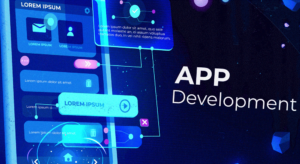A blood transfusion involves donating, collecting, storing, testing and delivering blood to a person in need. Transfusions save countless lives yearly, and improving the technology could help even more people.
“Artificial intelligence can potentially revolutionize this part of the medical care industry”
Here’s how doctors and researchers have begun testing AI for blood transfusions and the implications this practice could have on the health care industry in the future.
Monitoring Patients During Transfusions
Many recipients of blood transfusions are older adults or have altered mental status. Consequently, someone has to monitor them during the process to ensure they don’t bend their arm or remove the IV.
However, a whole blood transfusion can take two to four hours. Nurses overseeing at-home transfusions may need to leave the room at some point and don’t always have another person to step in while they’re out. This could put patients at risk of accidentally harming themselves.
That’s why Wakayama Medical University Hospital researchers have started testing an AI algorithm that monitors patient movement during blood transfusions. The software uses Python to determine initial body position. The AI can tell if someone bends their arm and notifies a physician. The doctor can watch the footage on a smartphone and contact the attendant if needed.
Researchers have only used the software in a pilot study so far. However, it shows great promise for aiding attendants during blood transfusions, especially in the home health setting.
Preventing Errors
Doctors must always match patients with a compatible blood type for a transfusion. Otherwise, the results can be disastrous — even fatal. As the patient’s immune system attacks the foreign cells, their blood may form thick clots that end up killing them.
Blood banks and doctors thoroughly check donated blood before administering it to a patient. They screen it for ABO type and check the Rh factor, among other things.
Still, accidents happen, usually because of human error. An estimated one out of every 19,000 units of red blood cells is given to the wrong patient annually. One in 1.8 million cases of red blood cell transfusions causes a fatal hemolytic reaction every year.
“AI has the potential to save lives by double-checking donated blood for compatibility before doctors transfuse it.”
It can assist in matching blood types and distinguishing subpopulations of cells within a sample. AI can help doctors spot health issues sooner and learn about the risk factors of certain blood going to specific patients.
Minimizing Overuse
Another human error may have fewer dangerous effects on patients but can waste donated blood. According to the U.S. Food and Drug Administration Center for Biologics Evaluation and Research, many health care systems overuse transfusions by giving one that may not be strictly necessary. This better-safe-than-sorry method can waste blood badly needed by more critical patients.
Now, researchers are working on developing an AI-based blood utilization calculator. This calculator can potentially guide doctors’ decisions on whether to transfuse blood and how much to use for a patient. The up-and-coming technology is promising for use in health care settings and can be beneficial in emergencies.
Locating and Profiling Potential Donors
One potential use for AI in blood banking is to look at available data to find donors. This would be especially beneficial during disasters when blood is urgently needed. For example, AI could:
- Track blood donor behavior after donation
- Check for seasonal variations among donor types
- Develop metrics for repeat donors
- Identify what motivates people to give blood
- Look at the cognitive, demographic and psychological characteristics of blood donors
Compiling this data could be very useful for retaining existing blood donors and attracting new ones, especially in emergencies.
Developing New Blood Products
“A physician-scientist from the University of Maryland School of Medicine (UMSOM) is leading a research program to develop a new artificial blood product.”
It would be stored at room temperature and could save victims of warfare, gunshots or car accidents within minutes of first responders arriving on scene.
The product will combine synthetic elements like artificial oxygen carriers and freeze-dried plasma to help it remain stable outside the fridge. It will be able to deliver oxygen, replace blood volume and stop a patient’s bleeding just like real blood does.
Researchers are using AI, experimental platforms, and animal models to develop and test the therapy. They are also trying different manufacturing and packaging methods to make the product more practical to use in the field.
A Synergistic Partnership
Because blood transfusions often occur during emergencies and have so much potential for error, they will always require a medical professional to be present. The human touch also comforts patients during what can be a very stressful procedure.
Still, AI is an extremely valuable asset to doctors and nurses. Algorithms can check blood for donor compatibility, reduce overuse, help develop new therapies and locate potential donors. In the future, AI will certainly have a place in every hospital.










